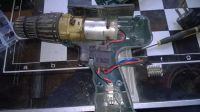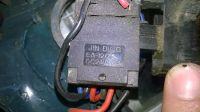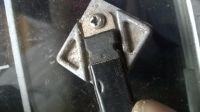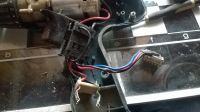Hello,
I have a BOSCH GSR 24ve-2 screwdriver. Batteries died, cost PLN 220. I would like to convert it to a "network" because it is efficient Reading a lot of topics on the electrode I read that I needed:
1. 24v transformer (mine works on 24v) transformer-24v-large-8a-functional-
2. 25A rectifier bridge https://www.laro.com.pl/index.php5/sklep/mos_pro/1467
3. Kondensator 4700uf / 50V https://www.laro.com.pl/index.php5/sklep/kon_ele/555
questions:
1. Did I choose the right elements?
2. Without battery (lost in time and space) can you check which side is + and - on the screwdriver?
3. What is the best average cable to choose? I read that minimum 0.75mm
I have a BOSCH GSR 24ve-2 screwdriver. Batteries died, cost PLN 220. I would like to convert it to a "network" because it is efficient Reading a lot of topics on the electrode I read that I needed:
1. 24v transformer (mine works on 24v) transformer-24v-large-8a-functional-
Moderated By ANUBIS:3.1.18. Do not send links that will become inactive after some time. This will cause the discussion to lose any meaning.
2. 25A rectifier bridge https://www.laro.com.pl/index.php5/sklep/mos_pro/1467
3. Kondensator 4700uf / 50V https://www.laro.com.pl/index.php5/sklep/kon_ele/555
questions:
1. Did I choose the right elements?
2. Without battery (lost in time and space) can you check which side is + and - on the screwdriver?
3. What is the best average cable to choose? I read that minimum 0.75mm






